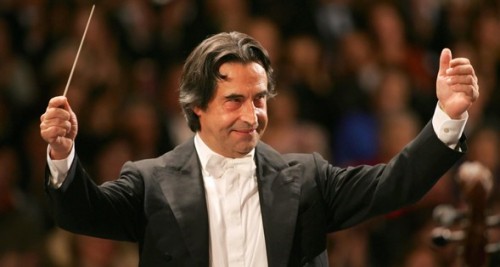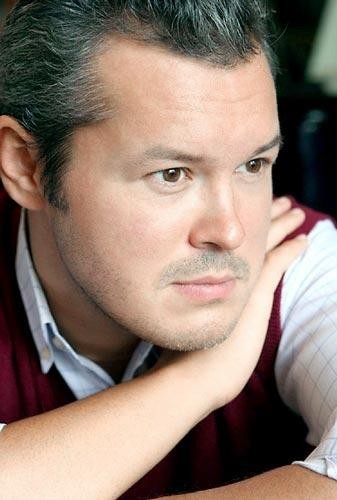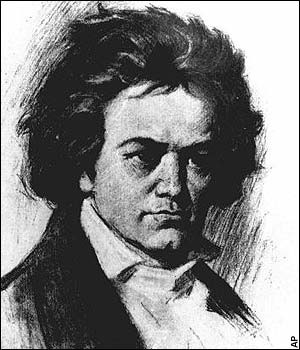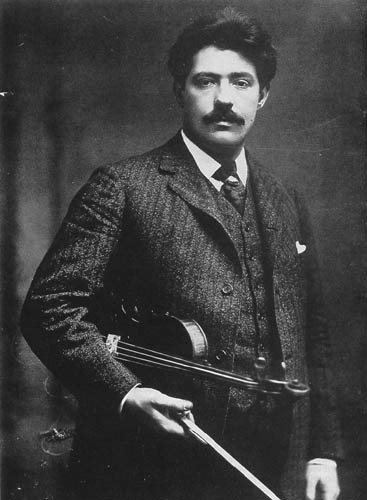The New York Philharmonic: Riccardo Muti
Vadim Repin Performs the Beethoven Violin Concerto
By: Susan Hall - Mar 11, 2010
Riccardo Muti
Vadim Repin, Violin
The New York Philharmonic
Avery Fisher Hall, Lincoln Center
Beethoven, Concerto for Violin in D Major
Franck, Symphony in D Minor
Program repeated on March 11 at 7:30 pm and March13 at 8 pm
Riccardo Muti has pleased New York audiences for several weeks. This program presented by the New York Philharmonic may be its acme. Muti is interpreting Beethoven's only concerto for the violin, the D Major. Cesar Franck's seldom performed Symphony in D minor, is presented in the second half of the program. The compositions are both in D modes, and modality is explored creatively by both composers.
The Beethoven was composed in 1806 during a prolific period. The violin soloist does not enter until 88 measures have been played. Soloist Vadim Repin was a perfect choice in many ways. It's fun to watch Repin wait those measures out.
The concerto opens with five beats on the timpani. An inexperienced conductor, reading the opening passage as measure three where the oboes enter, stopped a band during rehearsal, and told the timpanist that he did not need to be reminded of the tempo.
In contrast, Muti is master of the music and his instrumentalists. The grand sweep of both the Beethoven and the Franck is expanded and held by the conductor as he leads us through the bold strokes and intimate details of their works.
In Muti's hands, deceptive cadences and forceful chords of the concerto create arresting color and texture. A D sharp, which when first introduced sounds like a wrong note, is developed throughout the work in surprising and then comforting phrases. Stillness in the second movement is an attention-grabber in Repin's rendition. The lyricism in the upper compass is accompanied by the declamatory power of the semiquavers.
The concerto was written for Franz Clement, premier violinist of his day. Beethoven wrote to him, "..nature and art vie in making you one of the great artists." Clement was not provided cadenzas by the composer. According to the records, Clement let loose and continued to perform his own improvisations between the movements of the concerto. Muti did not seem threatened by such an outbreak by the violinist. Repin instead chose cadenzas written by Fritz Kreisler and they were stupendous. His risk-taking left us exhilarated. Repin also was able to capture the parts which have been referred to as "ethereal embroidery."
The Symphony in D Minor is Cesar Franck's only symphony. Architecturally large and instrumentally varied, we often hear anxious, questioning phrases which sound like slow introductions in Beethoven.
When the symphony was first performed, it was controversial. Frank's wife liked it. Some were encouraged by references to Brahms. The symphony has only three movements, because Franck was able to ingeniously combine the allegretto and scherzo in the second movement. Yet audiences at the French premier were angered by the change in form. The English horn solo combined with pizzicati strings proves irresistible when played at the good pace Muti takes.
Franck had frequently shown people his score and aired his intentions. One pupil Louis de Serres, asked if the symphony had been inspired by a poetic idea. Franck replied: "No, it is just music, nothing but pure music. At the same time, while I was composing the allegretto, especially the first phrases of it, I did think -- oh so vaguely of a procession in the olden times." He added, aware of the novelty of the work, "I have been very daring I know. But you wait till next time. I shall go much farther in daring them!"
Charles Gounod complained that the piece was "an assertion of impotence pushed to the point of dogma." (What ?) Debussy liked it. "What smart ideas in the middle section of second movement with the subdued clarinets." One critic in a book titled "Music Ho!" described the symphony as "a chimerical monster, a musical Minotaur that has fortunately had no progeny!" Some say that we would not have had Messiaen without this work, reason enough for its existence.
Franck told his pupils he would never write like this again. Especially he would never give the brass those punctuations of loud passages when the brass is not weaving thick patterns in canon. He didn't. He died.
Franck himself wrote a minute analysis of the symphony for program notes at the Concerts Lamoureux of November 19,1893. He makes no reference to connection between themes, nor to important points in the cyclic form. Nor does he say one word in the note about his ingenious plan for combining the andante and the scherzo. The secrets of his composition were revealed to his pupils. He did not think they would be of interest to the general public.
And so we bid adieu to Maestro Muti. Thanks for the memories.
Vadim Repin, Violin
The New York Philharmonic
Avery Fisher Hall, Lincoln Center
Beethoven, Concerto for Violin in D Major
Franck, Symphony in D Minor
Program repeated on March 11 at 7:30 pm and March13 at 8 pm
Riccardo Muti has pleased New York audiences for several weeks. This program presented by the New York Philharmonic may be its acme. Muti is interpreting Beethoven's only concerto for the violin, the D Major. Cesar Franck's seldom performed Symphony in D minor, is presented in the second half of the program. The compositions are both in D modes, and modality is explored creatively by both composers.
The Beethoven was composed in 1806 during a prolific period. The violin soloist does not enter until 88 measures have been played. Soloist Vadim Repin was a perfect choice in many ways. It's fun to watch Repin wait those measures out.
The concerto opens with five beats on the timpani. An inexperienced conductor, reading the opening passage as measure three where the oboes enter, stopped a band during rehearsal, and told the timpanist that he did not need to be reminded of the tempo.
In contrast, Muti is master of the music and his instrumentalists. The grand sweep of both the Beethoven and the Franck is expanded and held by the conductor as he leads us through the bold strokes and intimate details of their works.
In Muti's hands, deceptive cadences and forceful chords of the concerto create arresting color and texture. A D sharp, which when first introduced sounds like a wrong note, is developed throughout the work in surprising and then comforting phrases. Stillness in the second movement is an attention-grabber in Repin's rendition. The lyricism in the upper compass is accompanied by the declamatory power of the semiquavers.
The concerto was written for Franz Clement, premier violinist of his day. Beethoven wrote to him, "..nature and art vie in making you one of the great artists." Clement was not provided cadenzas by the composer. According to the records, Clement let loose and continued to perform his own improvisations between the movements of the concerto. Muti did not seem threatened by such an outbreak by the violinist. Repin instead chose cadenzas written by Fritz Kreisler and they were stupendous. His risk-taking left us exhilarated. Repin also was able to capture the parts which have been referred to as "ethereal embroidery."
The Symphony in D Minor is Cesar Franck's only symphony. Architecturally large and instrumentally varied, we often hear anxious, questioning phrases which sound like slow introductions in Beethoven.
When the symphony was first performed, it was controversial. Frank's wife liked it. Some were encouraged by references to Brahms. The symphony has only three movements, because Franck was able to ingeniously combine the allegretto and scherzo in the second movement. Yet audiences at the French premier were angered by the change in form. The English horn solo combined with pizzicati strings proves irresistible when played at the good pace Muti takes.
Franck had frequently shown people his score and aired his intentions. One pupil Louis de Serres, asked if the symphony had been inspired by a poetic idea. Franck replied: "No, it is just music, nothing but pure music. At the same time, while I was composing the allegretto, especially the first phrases of it, I did think -- oh so vaguely of a procession in the olden times." He added, aware of the novelty of the work, "I have been very daring I know. But you wait till next time. I shall go much farther in daring them!"
Charles Gounod complained that the piece was "an assertion of impotence pushed to the point of dogma." (What ?) Debussy liked it. "What smart ideas in the middle section of second movement with the subdued clarinets." One critic in a book titled "Music Ho!" described the symphony as "a chimerical monster, a musical Minotaur that has fortunately had no progeny!" Some say that we would not have had Messiaen without this work, reason enough for its existence.
Franck told his pupils he would never write like this again. Especially he would never give the brass those punctuations of loud passages when the brass is not weaving thick patterns in canon. He didn't. He died.
Franck himself wrote a minute analysis of the symphony for program notes at the Concerts Lamoureux of November 19,1893. He makes no reference to connection between themes, nor to important points in the cyclic form. Nor does he say one word in the note about his ingenious plan for combining the andante and the scherzo. The secrets of his composition were revealed to his pupils. He did not think they would be of interest to the general public.
And so we bid adieu to Maestro Muti. Thanks for the memories.






